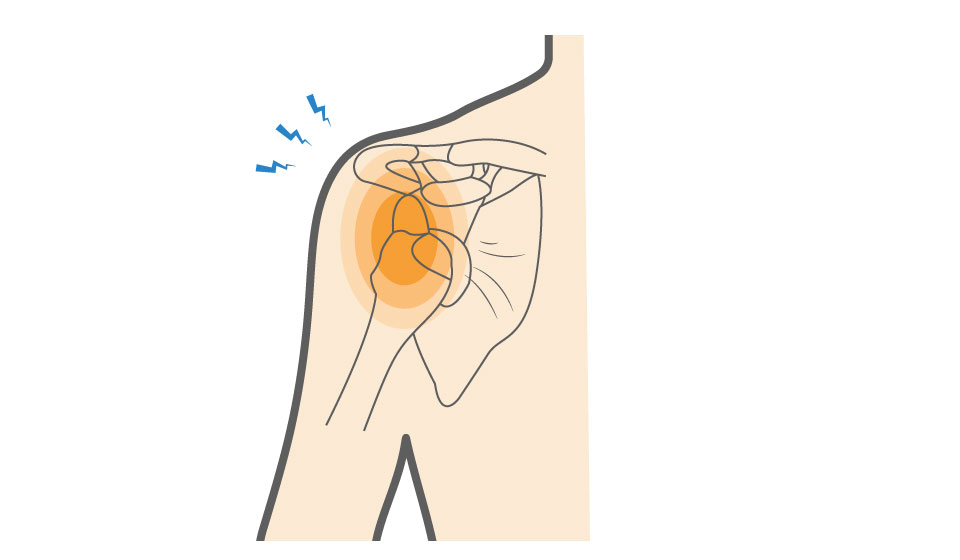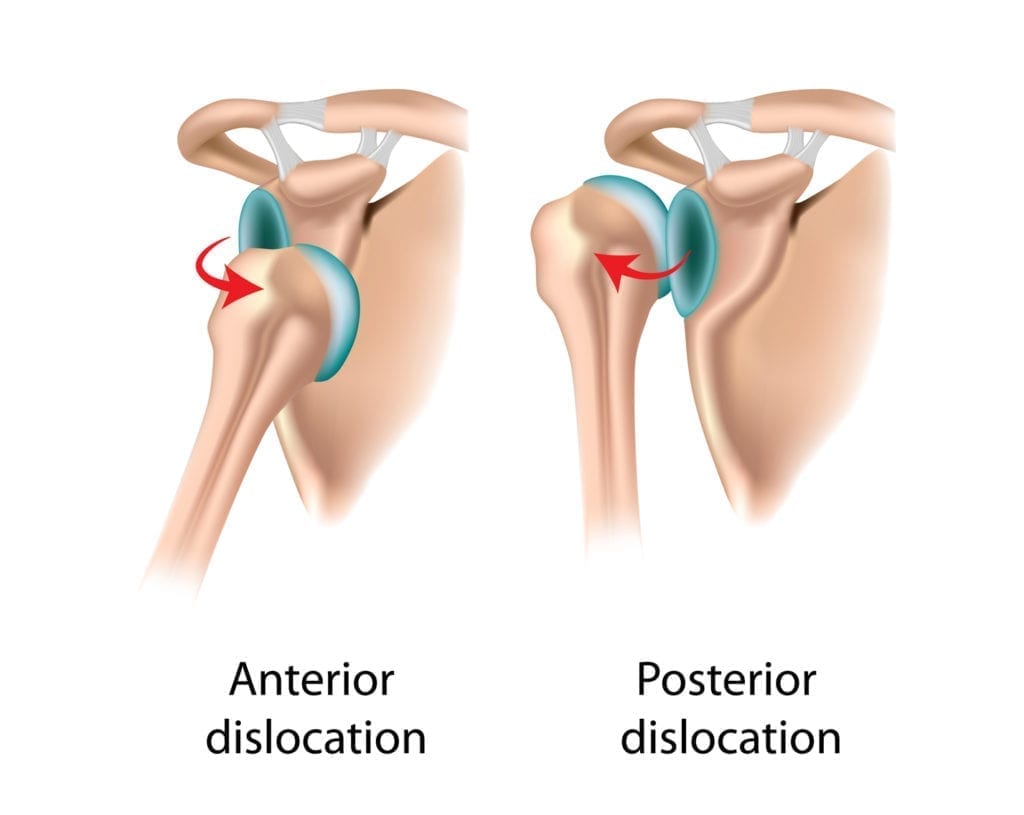Shoulder dislocations occur when the head of the humerus (the long bone of the upper arm) completely leaves the glenoid cavity of the scapula (shoulder blade). Although the structure of the shoulder provides a great range of motion for athletic activities, it is also at a higher risk of dislocations. In atraumatic shoulder dislocation (multidirectional instability), the head of the humerus slowly, over time, slips out of its socket, without having experienced an injury or a traumatic incident.
Multidirectional Instability of the Shoulder Treatment
Shoulder dislocations occur when the head of the humerus (the long bone of the upper arm) completely leaves the glenoid cavity of the scapula (shoulder blade). Although the structure of the shoulder provides a great range of motion for athletic activities, it is also at a higher risk of dislocations. In atraumatic shoulder dislocation (multidirectional instability), the head of the humerus , slips out of its socket, without having experienced an injury or a traumatic incident.
Overview
Overview

What causes Atraumatic Shoulder Dislocation(Multidirectional Instability)?
Atraumatic shoulder instability is not related to injury or trauma to the shoulder. It is the result of stretching of the shoulder capsule (a ligament that protects the muscles and ligaments of the shoulder) over a period of time. Repetitive overhead motions, like the motions necessary for swimming, can overwork and stretch the muscles of the shoulder capsule, leading to chronic shoulder instability. This can occur in either the anterior (shoulder pops out the front) or posterior (shoulder pops out the back) direction.
In some athletes, the shoulder may pop out in all directions. This is referred to as multidirectional instability. In these athletes, their ligaments are generally lax or loose, which is often associated with a loose shoulder joint or hypermobility syndrome. This allows the shoulder to dislocate or subluxate in all directions. Oftentimes, people with multidirectional instability feel that they are “loose-jointed.”
Atraumatic shoulder dislocation (multidirectional instability) is common in these sports:
- Golf
- Gymnastics
- Swimming
- Tennis
- Volleyball

Symptoms
You may have a multidirectional shoulder instability if you experience:
- Feelings of looseness or instability of the shoulder
- Recurring (repeated) subluxation
- Signs of a looseness in other joints
When to see a doctor
If you’re experiencing symptoms of multidirectional shoulder instability that do not improve with rest, make an appointment with an orthopedic specialist. During your appointment, your doctor will ask you to describe in which positions your shoulder feels the most unstable. He/she will also perform some tests to assess the stability of the shoulder joint and evaluate for non-traumatic dislocation or hypermobility syndrome.
In order to make a diagnosis, your doctor may prescribe the following imaging tests:
- CT
- MRI
- Ultrasound
- X-ray
Non-operative treatment
Atraumatic shoulder dislocation (multidirectional instability) is often treated without surgery. You will most likely begin a physical therapy program with a trained professional to strengthen and stabilize the muscles of the shoulder. This is the standard non-operative treatment for non-traumatic dislocation caused by hypermobility syndrome or a loose shoulder joint.
Try these exercises to help address your condition:
Below is a PDF of the Exercise Program
Surgical Treatment
If physical therapy does not improve shoulder stability, your doctor may recommend surgery. The goal of surgery for atraumatic shoulder dislocation (multidirectional instability) is to tighten the ligaments that have been overstretched in order to reduce the risk of recurrent dislocations. Sometimes this can be done arthroscopically. Arthroscopy is a minimally invasive surgical technique that uses several tiny incisions (roughly one centimeter long) through which special instruments and a camera, attached to a thin, flexible tube, are inserted. However, sometimes, when the shoulder is very loose, a small incision on the front of the shoulder is needed to fix the instability. This surgery is called a capsular shift.

Recovery
Recovery from an atraumatic shoulder dislocation (multidirectional instability) will depend on how well your shoulder responds to physical therapy and whether you require surgery. Depending on the severity of the shoulder instability, atraumatic shoulder dislocations can heal in a matter of weeks using non-operative treatments.
If you need surgery, you can expect to return to normal activities within three to six months from the time you begin treatment. Immediately following surgery, you will be required to keep your arm still in a sling for several weeks before beginning range of motion exercises with a licensed physical therapist. You can return to play when you have recovered a full range of motion and strength, and have no pain.
Recurrence of atraumatic shoulder dislocation (multidirectional instability) can occur with continued repetitive use of the shoulder. For this reason, it’s important to prioritize strengthening exercises of the shoulder throughout your athletic career, especially for those with hypermobility syndrome or a loose shoulder joint.
GET BACK TO WHAT YOU LOVE. FASTER
Sources
https://orthoinfo.aaos.org/en/diseases–conditions/chronic-shoulder-instability/
http://www.orthop.washington.edu/?q=patient-care/articles/shoulder/atraumatic-shoulder-instability.html
https://orthoinfo.aaos.org/en/diseases–conditions/dislocated-shoulder/
https://www.physio-pedia.com/Shoulder_Instability
https://www.ncbi.nlm.nih.gov/pubmed/11307070
http://www.jshoulderelbow.org/article/S1058-2746(01)79041-6/pdf
http://centralcoastortho.com/patient-education/loose-shoulder-multidirectional-instability/
http://www.theshoulderdoc.com/index.cfm?fuseaction=ct.overview&content_id_int=69
https://www.moveforwardpt.com/SymptomsConditionsDetail.aspx?cid=4424aed5-422e-4243-b02f-451eb67e4983
Frequently Asked Questions
How long does it take to accurately diagnose multidirectional instability?
It varies, but diagnosis can be delayed for weeks or months if symptoms are attributed to general shoulder pain or overuse. A correct diagnosis often requires detailed physical exams and occasionally imaging.
What are the risks of delayed treatment for atraumatic shoulder dislocation?
Delaying treatment can lead to worsening of the shoulder instability, more frequent dislocations, and a longer recovery timeline, potentially requiring surgery.
What are the signs that my shoulder instability might be multidirectional and not just overuse?
If your shoulder frequently feels like it might "slip out" in more than one direction (front, back, or down), or if you notice generalized looseness or clicking without a clear injury, it could point to multidirectional instability. These symptoms, especially in both shoulders or in hypermobile individuals, should raise red flags for atraumatic dislocation.
What’s the average treatment timeline for multidirectional instability without surgery?
Most patients undergoing non-operative treatment, like physical therapy, begin to see improvement in shoulder stability within 6–12 weeks. However, full recovery may take up to 6 months.

